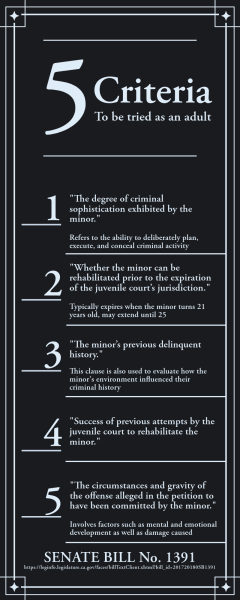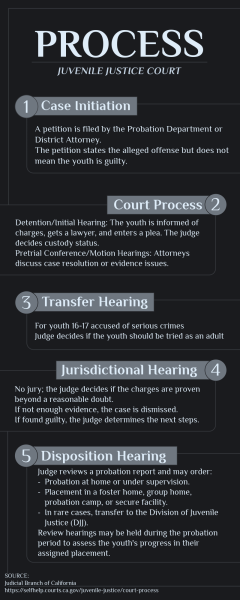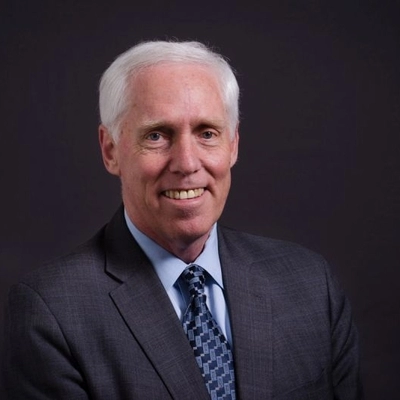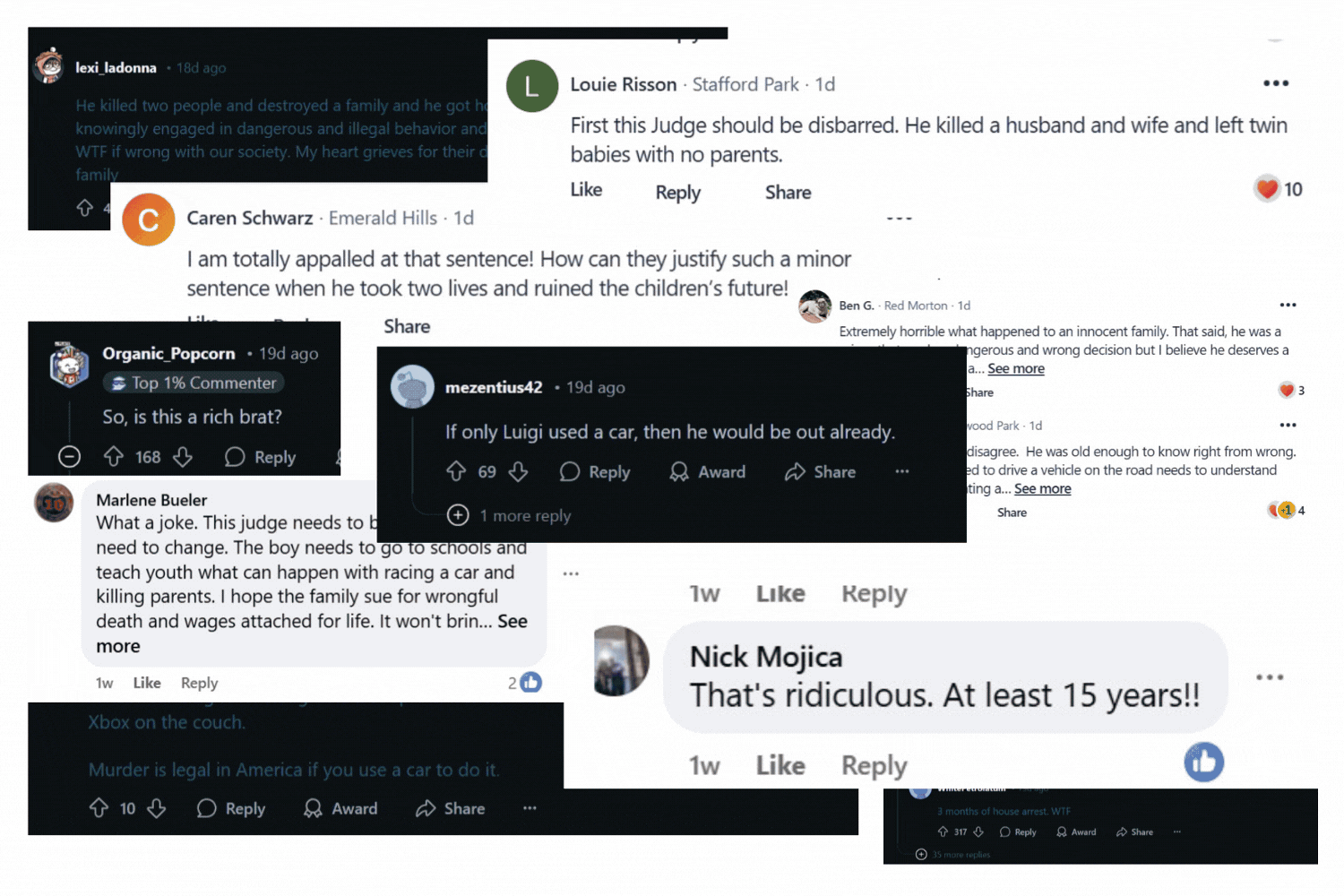Public outcry has followed the sentencing of a 20-year-old, whose car crash resulted in the death of a couple, leaving their twin daughters orphaned.
The 20-year-old was tried on Jan. 16 in San Mateo juvenile court and was sentenced to 90 days of electronic home monitoring.
The case has drawn widespread media attention, with outlets such as NBC Bay Area, KTVU Fox 2, KRON4 News, and Redwood City Pulse covering the story. However, legal experts argue that much of the reporting has been misleading.
“A lot of what’s been reported is simply not true. While some outlets claim the young man received only 90 days, in reality, he had already spent two years and three months in juvenile hall before his official sentence,” said Johanna Rasmussen, chair of the Juvenile Justice and Delinquency Prevention Commission (JJDPC) of San Mateo County. “The judge followed the law exactly as it was written.”
The defendant was released to his parents under the sentencing of 90 days of electronic home monitoring, restricting him to his home except for school, medical visits, and other approved activities. His charges included felony vehicular manslaughter, engaging in a speed contest, and causing significant bodily injury.
“I work with the mother of the deceased,” said Shawnna Sullivan, a Palo Alto resident. “That light sentence is practically no sentence, and the young man has no consequences.”
Other Bay Area residents, such as John Hoffman, echoed Sullivan’s sentiments.
“He should have received several years of prison time. Time enough to think about the seriousness of his actions and its repercussions, the death of two people,” Hoffman said.
However, others were surprised at the outroar.
“‘Lock them up’ seems to be the big cry in America,” said Alistair Adams, another Bay Area resident. “That’s $100K a year. You can get a great college education for that amount. How does society benefit from paying that much?”
Background
The crash — not proven in court to be a street-racing incident — that killed Gregory Ammen and Grace Spiridon occurred on Nov. 4, 2022, along El Camino Real in Redwood City.
The defendant, then a 17-year-old Woodside senior, was speeding, along with Kyle Harrison, another driver involved in the incident. Harrison fled the scene but was later apprehended two weeks after the crash.
The crash resulted in the deaths of Ammen and Grace Spiridon, while their twin daughters, who were also in the car, sustained minor injuries.
“The victims are the ones who witnessed their parents’ death,” said Liza Spiridon, Grace Spiridon’s sister. “The defendant has the privilege of being with his parents in his home, celebrating many more birthdays and holidays.”
Following the crash, the teen driver remained at the scene and was treated at a local hospital.
“He was in a wheelchair recuperating because he was hurt,” said Arnold Morales, father of the defendant. “He had multiple ribs broken. His femur was broken, and his ankles were broken. He had severe lacerations in his brain and on his face.”
The driver was then placed in juvenile detention, where he spent two years and three months awaiting sentencing.
“The police showed up to the hospital and arrested him before he could even walk,” Arnold Morales said.
On Jan. 16, 2025, he was released to his parents under the sentence of 90 days of electronic home monitoring.
“The girls witnessed their parents’ death. They’re the ones who felt their parents’ blood on them. And they’re the ones who can only see their parents by going to the cemetery for the rest of their lives,” Liza Spiridon said.
Media Coverage
The case quickly garnered widespread media attention, with outlets like KTVU and The Daily Mail covering the story. Many reports focused on the sentence, with The Daily Mail describing it as “appallingly light.”
According to the Office of Juvenile Justice and Delinquency Prevention (OJJDP) Statistical Briefing Book, in 2020, California’s reporting coverage of juvenile arrests was 99%, compared to the nation as a whole, which was 76%.
“I’m extremely upset about how most of the media has been careless with the information they received, unconcerned about whether it’s true or not,” Arnold Morales said. “They fail to verify facts before publishing.”
Rasmussen criticized much of the coverage, claiming it misrepresented the facts.

“Much of what’s been put in the paper is simply not true,” Rasmussen said. “When news reports ‘he only got a 90-day sentence,’ they fail to mention that he had already spent two years and three months in the juvenile hall.”
Only one outlet, Redwood City Pulse, issued a correction after initially omitting this crucial detail, which Rasmussen attributed to pressure from outside organizations.
“The media is only showing half of the story — often just the sentencing or the defense’s perspective,” Liza Spiridon said. “Although the defendant spent over two years in juvenile detention, it’s somewhat misleading to portray this without mentioning that his parents were able to visit him regularly.”
The defense was directly quoted in one publication, the Mercury News.
“You have not seen the defense lawyer on the television because his defendant is a juvenile, and laws about confidentiality make it improper to put his full name in the paper,” Rasmussen said.
Juvenile Court Proceedings
In California, juveniles aged 16 and 17 may be tried as adults in criminal adult court, depending on the nature of the offense. Judge Susan Etezadi denied the prosecution’s request to move the case to adult court in June.

“Juveniles typically remain in juvenile hall until their case is completely adjudicated, meaning until all legal proceedings are resolved,” Rasmussen said. “This is a routine part of the process.”
The defendant was found guilty of felony vehicular manslaughter, engaging in a speed contest, and causing significant bodily injury. After the proceedings began in 2020, he was placed in juvenile detention to await his sentencing.
“He was only 70 days from turning 18, so it’s important for the public to understand how close he was to being treated as an adult,” Liza Spiridon said.
The transfer hearing to determine whether the proceedings should be handled within the juvenile court took place on June 6. He was determined to have not fit the criteria to be tried as an adult.
Arnold Morales said that the San Mateo District Attorney (DA), Stephen Wagstaffe, was closely involved with the case, and with the press.
“Wagstaffe has strongly participated in my son’s case,” he said. “Not only was he aware that my son didn’t have any criminal record, but he continued to pursue him in public, in close contact with the press.”
The juvenile justice process involves several stages, including detention hearings, adjudication, and disposition. Throughout these stages, the court considers various factors to determine appropriate interventions and consequences.

The prosecution’s push for the defendant to be retried as an adult was denied by Etezadi, and second-degree murder charges brought forth by the prosecution were denied.
In California, vehicular manslaughter is defined under Penal Code Section 192(c) and can be charged as either a misdemeanor or a felony, depending on the circumstances.
According to California Penal Code Section 187(a), murder is defined as “the unlawful killing of a human being, or a fetus, with malice aforethought.”
Arnold Morales noted that the prosecution made false claims about vehicle modifications and labeled the vehicle ‘a race car’.
“The District Attorney’s office was extremely careless about the information they were given, pursuing my son with murder charges, while at the same time saying that he didn’t have any intent of murder,” Arnold Morales said.
Before the trial, Liza Spiridon noted that the trial had been delayed due to requests made by the defense.
“The defense also requested a six-month extension because the Morales family switched from a private defender to a public defender, and the judge approved this request. This is why the trial took longer than anticipated,” Liza Spiridon said.
Arnold Morales noted that on the last day of the trial, each side was given about two hours for closing arguments.
“The prosecution’s argument was simplistic, asserting that my son should have known that driving fast is dangerous and could result in death. Meanwhile, the defense relied on the Watson murder precedent to demonstrate that my son had not committed murder,” he said.
District Attorney
Wagstaffe, elected in 2010, played a prominent role in both the court proceedings and the media coverage surrounding the case. Rasmussen said that attempts to move the case to adult court, despite clear criteria for juvenile status, were due to his efforts.

In California, the District Attorney is a constitutionally elected county official responsible for prosecuting criminal violations of state law and county ordinances within their jurisdiction. Their focus is on prosecuting offenses that threaten public safety and maintaining law and order.
Arnold Morales was discontent with the extent of Wagstaffe’s involvement in the case.
“He’s usually involved in cases that are determined to be extreme,” he said. “Wagstaffe has given multiple interviews propagating inaccurate narratives about my son’s case.”
Juvenile adjudications are not considered convictions and juvenile court records are generally confidential. However, certain exceptions allow for disclosure, and juvenile records can have long-term consequences, including challenges in employment and education. These negative impacts are often referred to as “collateral consequences.”
Rasmussen said that while juvenile cases are subject to strict confidentiality, Wagstaffe has publicly released sensitive information about the case.
“The DA has a relationship with the press. Every morning, he sends out what’s called press notes, and it’s basically a synopsis of the day’s cases. Sometimes he includes juvenile cases, that’s where he included this young man’s full name, and that’s how the press got it,” she said.
While the DA has a significant role in juvenile cases, Wagstaffe is still bound by confidentiality rules. Rule 5.552 of the California Rules of Court mandates that juvenile case files are confidential and may only be disclosed under specific circumstances.
In response to Wagstaffe’s actions, the JJDPC sent him a letter in November concerning this practice of providing personal information of youth currently in the juvenile court system.

Letter to DA Wagstaffe | JJDPC | Use authorized by provider
“Rather than fomenting public fear and distrust in the purpose and effectiveness of our juvenile justice system, in your comments to media you might instead reflect the facts and outcomes to help the public understand and support our agreed rehabilitation objectives,” the letter said.
“We failed this kid because we weren’t able to protect his confidentiality,” Rasmussen said. “Now, whenever someone searches his name, this will be attached to it forever. That’s not how the juvenile system is supposed to work.”
Arnold Morales also noted the conflicting attitudes when Wagstaffe handled his son’s case versus others. He cited a case Wagstaffe had been involved with. Luke Nardini, a professional race car driver traveling as a tourist from Australia, killed an elderly couple in an oncoming car while driving on the wrong side of the road on Sept. 1, 2023.
Nardini had been sentenced to serve 60 days in county jail with 10 days credit for time served, and present in front of three high schools. He had been tried as an adult on April 22, 2023.
“Meanwhile, Wagstaffe tried to send my son to prison for 30 years to life. The contrast in treatment is shocking,” Arnold Morales said. “How does my son, who was allegedly racing something that was never proven or challenged in court get charged with second-degree murder based entirely on hearsay and speculation?”
Justice and Rehabilitation
According to the OJJDP, youth who participate in structured therapeutic programming are about 30% less likely to re-offend than those who do not receive such services.
Any youth entering the juvenile justice system is required to participate in therapeutic programming according to Rasmussen. Their days are highly structured, with access to mental health support, including therapy.
“When a youth is placed under home detention or probation, the court and various services remain involved to monitor and support their rehabilitation,” Rasmussen said.
Sharon Cho, a juvenile court judge at San Mateo Court, highlighted the delicate balance that juvenile courts must strike between accountability and rehabilitation.
“You can’t consider one without the other,” Cho said. “There’s no specific weight assigned to any factor. Attempting to quantify it would be artificial and arbitrary.”
Harrison, the other defendant, awaits sentencing on Feb. 25. He faces up to up to 9 years and 4 months in prison.
“This is our community. We had two community members who passed and community members who are responsible for that,” Rasmussen said. “This is all of our issue. This is all of our problem to solve.”




